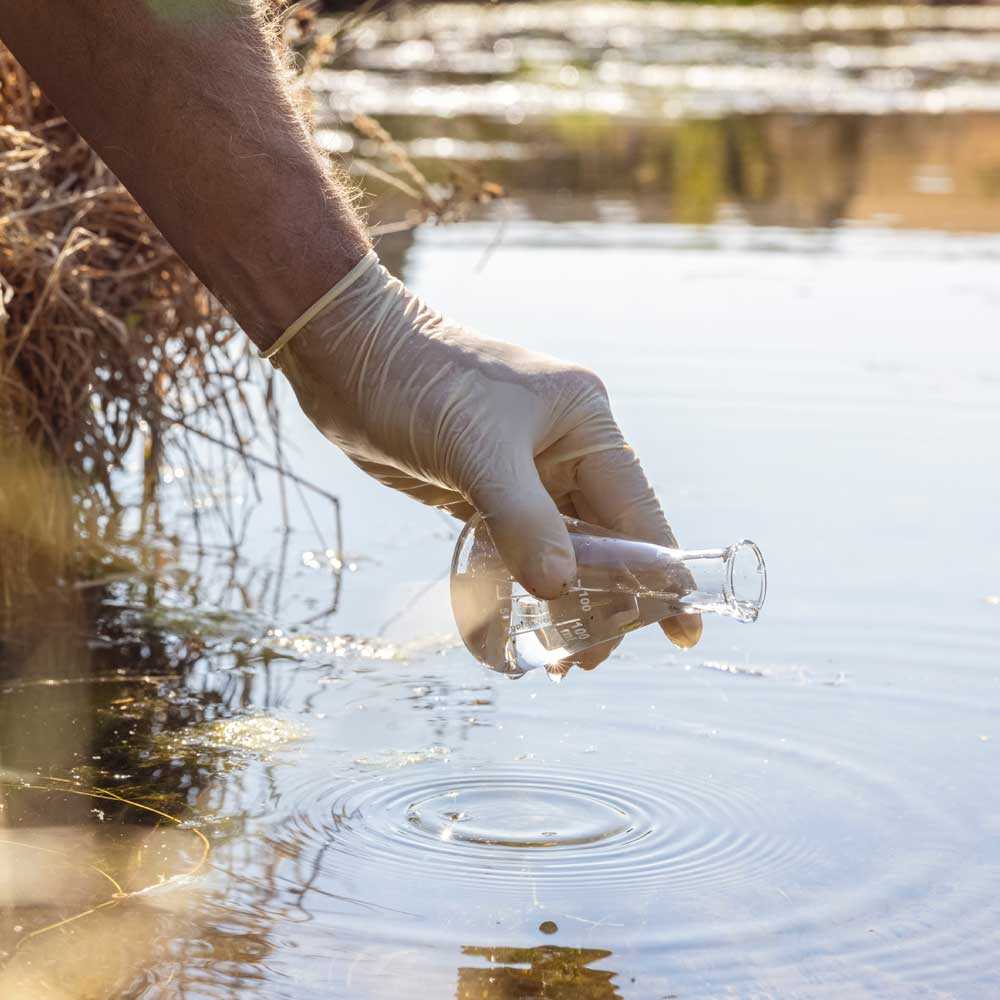EnviroMail 139 Australia - NATA accredited analysis of brominated flame retardants (PBDEs) extends to waters
Polybrominated diphenyl ethers (PBDEs) are persistent and increasingly common in the environment.

These chemicals are typically used as flame retardants in textiles, plastics and electronic products. PBDEs are a class of aromatic brominated compounds in which one to ten positions on the diphenyl ether structure are brominated, providing 209 possible congeners from mono- to fully brominated decabromodiphenyl ether. The congeners can be classed as homologous groups, each group carrying the same number of bromine atoms. Based on animal studies the toxicological effects on humans may include thyroid homeostasis disruption, neurodevelopmental deficits, reproductive changes and some cancers (Linares et al, 2015).
Commercial mixtures used as flame retardants consist of mixtures of brominated diphenyl ether (BDE) congeners. Earlier products consisted of congeners with between four and nine bromines (commercial PentaBDE and commercial OctaBDE) and later products consisting almost exclusively of decabromodiphenyl ether. DecaBDE is of international concern because of the potential to de-brominate in the environment via photodegradation to lower-brominated, more readily assimilated BDEs. As such, DecaBDE is listed in Annex A of the Stockholm Convention on Organic Pollutants for global elimination, as well as constituents of the PentaBDE and OctaBDE commercial mixtures. DecaBDE represents the main polybrominated flame retardant imported into Australia annually.

Figure: Molecular structure of PBDEs
Main sources of environmental exposure in Australia include release from articles during use, plastics manufacturing and metal and electronics recycling facilities. Main human exposure routes are through consumption of contaminated food (meat, fish and dairy products) and inhalation of indoor dust. PBDEs have routinely been detected in domestic wastewater streams in Australia suggesting transfer to clothing via household dust or air and released to the sewage system on laundering (Saini et al, 2016). Past release in industrial wastewater may also account for high localised concentrations. Due to their hydrophobic nature and resistance to degradation, PBDEs present in wastewater concentrate in sewage sludge in treatment plants (Clarke et al, 2010). Similarities between PBDEs and polychlorinated biphenyls (PCB) include their tendency to persist in the environment and to bio-accumulate in adipose tissues. Animal studies also report developmental neurotoxicity.
ALS Australia has offered NATA accredited analysis of PBDEs in soil since 2013 to meet the health-based Investigation Levels (HILs) in the National Environment Protection Measures (NEPM) for assessment of site contamination (Schedule B1). ALS is pleased to announce that NATA accreditation now extends to waters (including potable water and wastewater). Consistent with soils, reporting for waters is by homologue group (Br1 to Br10) as well as summed totals (Br1-9 and Br1-10). Limits of reporting (LOR) are provided in the table below. ALS also provides trace level PBDE analysis in soil, water and other matrices including biota and blood serum through international sister operations upon request.
Method information
ALS Method Code: EP064
Method Reference: In-house GC-MS / US EPA 1614
Limits of reporting (LOR):
| Analyte | LOR | Units |
|---|---|---|
| Analyte | LOR | Units |
| MonoBDE (Br1) | 1.25 | µg/L |
| DiBDE (Br2) | 1.25 | µg/L |
| TriBDE (Br3) | 1.25 | µg/L |
| TetraBDE (Br4) | 2.5 | µg/L |
| PentaBDE (Br5) | 2.5 | µg/L |
| HexaBDE (Br6) | 2.5 | µg/L |
| HeptaBDE (Br7) | 1.25 | µg/L |
| OctaBDE (Br8) | 2.5 | µg/L |
| NonaBDE (Br9) | 5 | µg/L |
| DecaBDE (Br10) | 5 | µg/L |
| Sum of PBDE (Br1 to Br9) | 1.25* | µg/L |
| Sum of PBDE (Br1 to Br10) | 1.25* | µg/L |
*ALS adopts the lowest LOR of the contributing components as the LOR of the sum.
General sampling requirements
100 mL unpreserved amber glass bottle with PFTE-lined lid Note: submit additional bottles for lab QA/QC
(Duplicates and Matrix Spikes) at the following frequency:
- Duplicate – 1 in 10 samples
- Matrix Spike – 1 in 20 samples
Samples should be submitted preferably at <4 °C
Holding time
7 days to extract (40 days to analyse extracts).
References
Department of Health and Ageing NICNAS (Australia) - Interim Public Health Risk Assessment of Certain PBDE Congeners. March 2007.
Linares V, Bellés M, Domingo J (2015). Human exposure to PBDE and critical evaluation of health hazards. Archives of Toxicology, 89(3), 335-356.
NEPM Schedule B1. Guideline on Investigation levels for Soil and Groundwater. May, 2013.
Saini A, Thaysen C, Jantunen L, McQueen R, Diamond M (2016). From Clothing to Laundry Water: Investigating the fate of Phthalates, Brominated Flame Retardants, and Organophosphate Esters, Environmental Science and Technology, 50, 9289-9297.
Stockholm Convention list of Persistent Organic Pollutants (POPs) – Annex A (Elimination).
Get in touch with us
If you have any questions relating to NATA accredited analysis of PBDEs, please contact:
Brisbane
Sydney
Melbourne
Perth























































